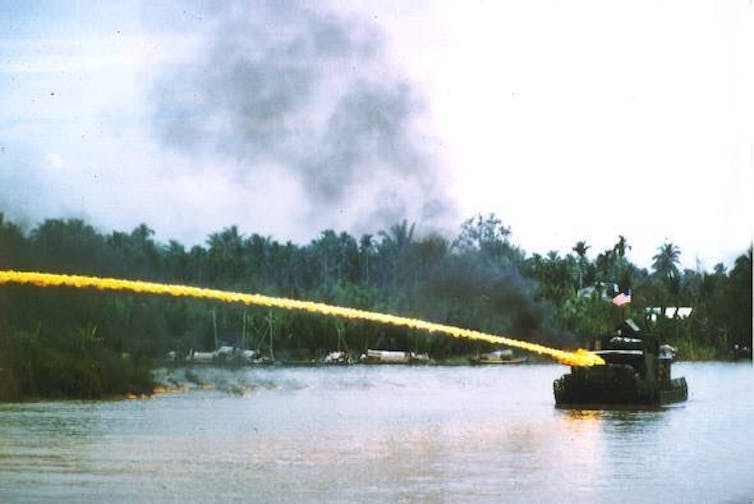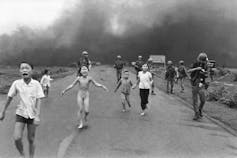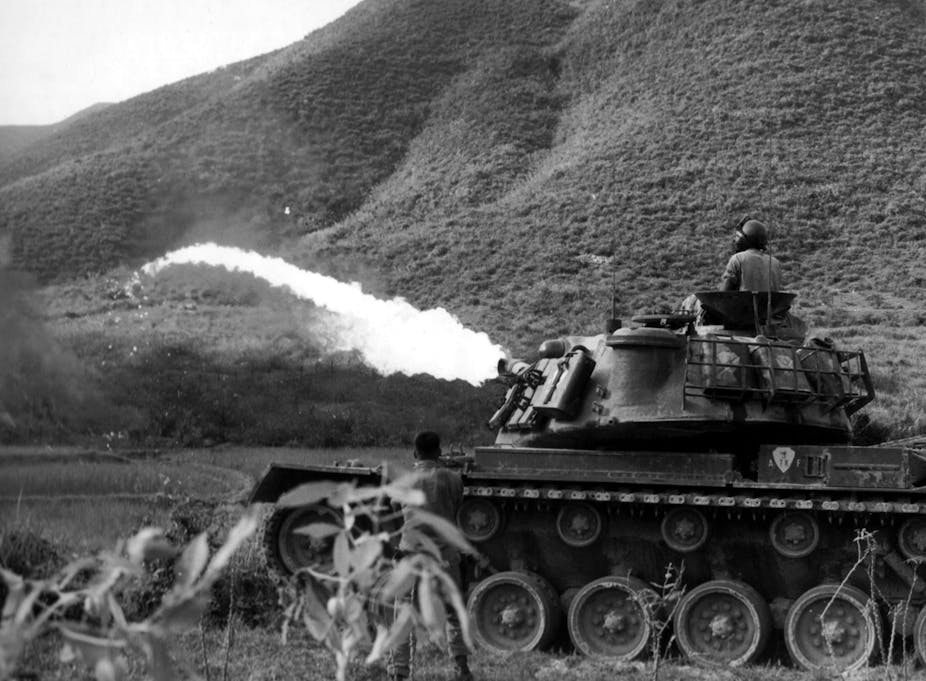There are allegations that a nerve agent was used in Syria recently. According to US officials, it killed more than 1400 people, including 400 children. But since then, in a more recent incident, a bomb dropped on a school caused many children to suffer from burns.
The substance used was widely reported as napalm. But was it? How can we know for sure? And what is napalm anyway?
Napalm has come to be associated with its use by the American and South Vietnamese forces during the Vietnam War, but its origins go further back.
In her book Greek Fire, Poison Arrows and Scorpion Bombs, the distinguished classical scholar Adrienne Mayor recalls that the Persian army under Xerxes the Great used flaming arrows 2,500 years ago. Not long after that the Roman army used spears tipped by a mixture of burning pitch and sulphur as a weapon.
By 700 AD, the inhabitants of Constantinople had developed a fearsome substance that became known as Greek fire. Crude oil had been discovered long before that, and it was widely used as a source of naphtha, an ingredient in flaming projectiles. To their mixture, Byzantines added further refinements.
Today, the ingredients are a lost secret, but it looks as if they used naphtha, pine resin and other chemicals including sulphur, projecting it long distances by forcing it through a nozzle under pressure, the original flamethrower. High-boiling chemicals like pine resin would enable the mixture to burn for longer and reach higher temperatures than one purely based on petrol-like molecules. It would also cause the burning mixture to adhere to any surface - or person - unlucky enough to be in its way. This was used twice successfully to fight off the Muslim navy besieging Constantinople.

Some people have called World War I “the Chemists’ War” for its use of substances like chlorine and mustard gas. One of the less successful weapons was the gasoline flamethrower. The trouble with it was that it burned too fast.
During World War II, American scientists re-investigated this weapon, in a team led by Louis Fieser (who an older generation of chemists will associate with an organic chemistry textbook). Just like the Byzantines, they found that adding a thickening agent to the fuel created something that burned longer and also tended to stick to surfaces. Their thickening agent was a soap-like material based on aluminum naphthenate and aluminium palmitate. The name napalm was derived from the first parts of the words naphthalene and palmitate. When they mixed this with gasoline, they got a viscous sticky brown liquid which burned more slowly and produced higher temperatures, making it a very effective weapon for fire-bombing cities, for example. Since then this formula has been refined many times.
It was found that if you mixed polystyrene (the stuff used to make plastic model kits, or in “expanded” form as a packaging) with benzene and gasoline, the resulting product was less flammable and thus safer to handle. Despite the fact it contained neither naphthalene nor palmitate, it became known as napalm B. Burning napalm would set peoples’ clothing on fire and produce 4th or 5th degree burns penetrating right through the skin. It came into combat use in the Korean War and even though it has been used by many countries in different conflicts since then, it is imperishably associated with the Vietnam War.
There is a photo of a nine-year-old Vietnamese victim of a misdirected napalm attack running down a road. She is naked because she has ripped off her burning clothes. Thanks to surgery she survived and Phan Thi Kim Phuc now lives in Canada.

Napalm has not been outlawed as a weapon of war, but a United Nations convention forbids its use against civilian populations. William Butler Yeats used the phrase “a terrible beauty is born” when writing about the Easter Rising of 1916. Napalm is not beautiful, it is obscene.

